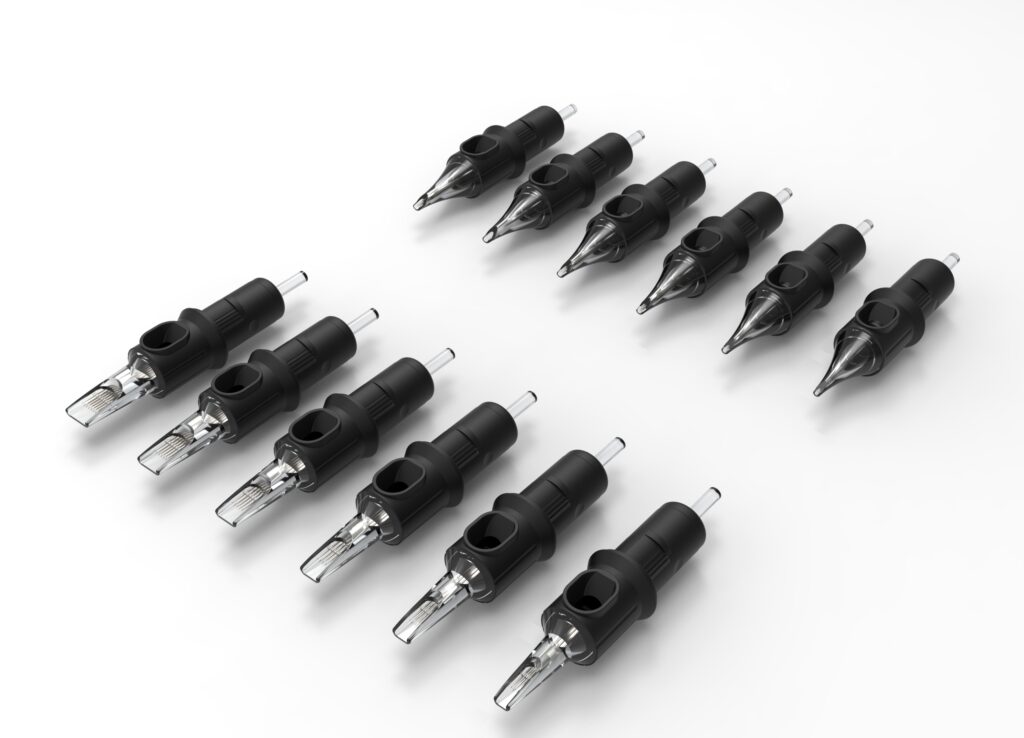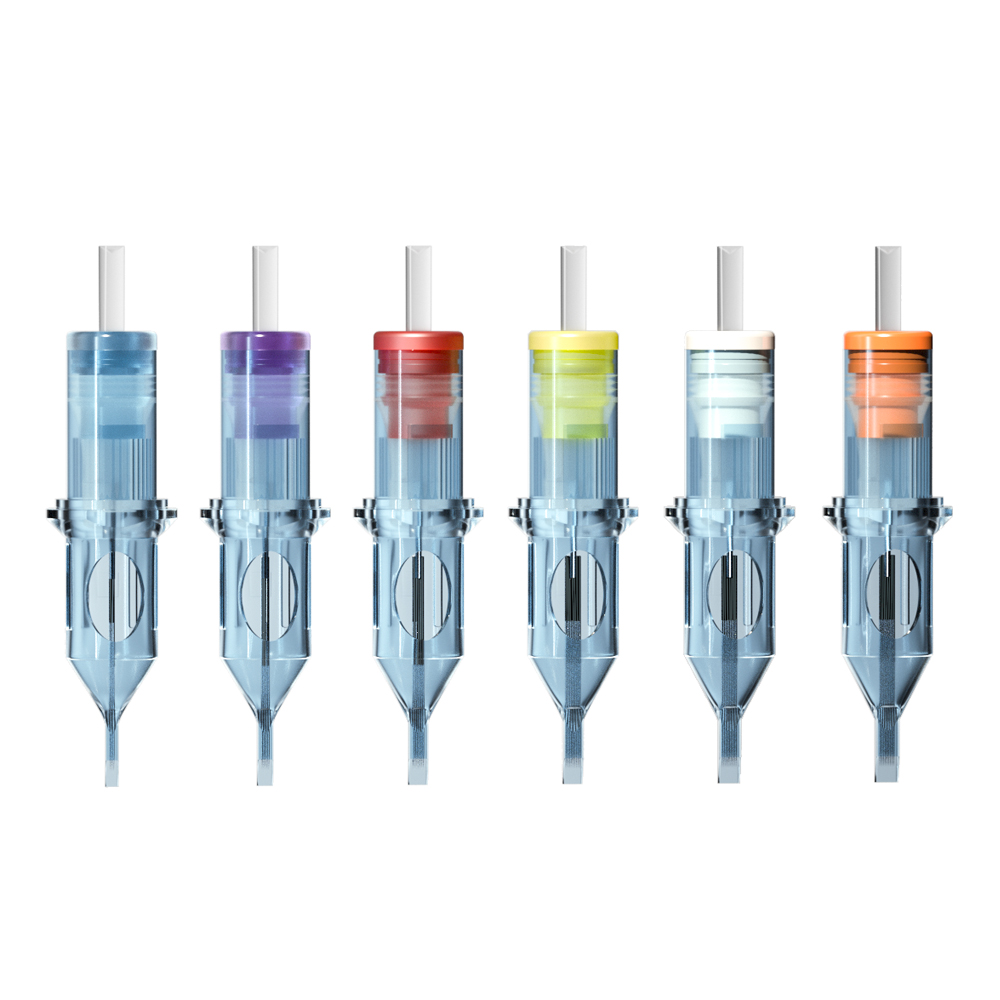Rotary tattoo needle size is an essential aspect of tattooing that can significantly impact the quality of the tattoo. Choosing the right rotary needle size is crucial to ensure that the tattoo lines are precise and the shading is smooth. There are different rotary needle sizes available, and each size has its own unique purpose.
A: Choosing the Right Needle Size: A Guide to Tattoo Needle Sizes
Understanding the different types of rotary needles and their uses is crucial when selecting the right needle size for a tattoo. Tattoo needle size chart can be used as a guide to help determine the appropriate needle size for a particular tattoo. The chart provides information on the various needle sizes available and the kind of tattooing they are best suited for.
II: Key Takeaways
- Choosing the right rotary needle size is crucial for tattoo quality.
- Tattoo needle size chart can be used as a guide to help determine the appropriate needle size.
- Understanding the different types of rotary needles and their uses is crucial when selecting the right needle size.

III: Tattoo Needle Size Chart
When it comes to rotary tattoo machines, the needle size is an important factor that artists need to consider. The size of the needle can affect the quality of the tattoo and the level of pain felt by the client.
A:Introduction to Tattoo Needles:
There are different types of tattoo needles available, and each type has its own size chart. The most common types of tattoo needles are Round Liner, Round Shader, Magnum, Curved Magnum, and Regular Magnum. Each of them has a specific function and is characterised by the way in which the needles are distributed.
B:Round Liner Needles:
Round Liner needles create small, circular formations and are most commonly used as lining needles. They are designed to produce a crisp and clean line, making them ideal for outlining tattoos. Round Liner needles come in various sizes, ranging from 3 to 14, with each size having its designated purpose.
C:Round Shader Needles:
Round Shader needles have a flat configuration and are used for shading and blending colors. They are also available in different sizes, ranging from 3 to 14, with each size having its specific function.
D:Magnum Needles:
Magnum needles have a flat configuration and are used for shading larger areas of the tattoo. They come in different sizes, ranging from 5 to 27, with each size having its specific function.
E:Curved Magnum Needles:
Curved Magnum needles have a curved configuration and are used for creating smooth, flowing lines in the tattoo. They come in different sizes, ranging from 5 to 27, with each size having its designated purpose.
F:Regular Magnum Needles:
Regular Magnum needles have a flat configuration and are used for shading and blending colors in larger areas of the tattoo. They come in different sizes, ranging from 5 to 27, with each size having its specific function.
G:Importance of Needle Sizes:
Overall, it is important for tattoo artists to have a good understanding of needle sizes and their functions. By choosing the right needle size, artists can create high-quality tattoos that are both aesthetically pleasing and comfortable for their clients.
IV:Types of Rotary Needles
Rotary needles come in different types and sizes, each designed for specific sewing tasks. Here are some of the most common types of rotary needles:
A:Universal Point Needles
Universal needles are the most commonly used rotary needles. They have a slightly rounded tip that makes them suitable for sewing a variety of fabrics, including woven and knit fabrics. Universal needles come in different sizes, with the larger sizes being suitable for heavier fabrics and the smaller sizes for lighter fabrics.
B:Specialty Needles
Specialty needles are designed for specific sewing tasks. Here are some of the most common specialty needles:
- Ballpoint Needle: This type of needle has a rounded tip that allows it to slide between the fibers of knit fabrics without damaging them.
- Sharp Point Needles: These needles have a sharp, tapered point that makes them suitable for sewing tightly woven fabrics such as silk and cotton.
- Round Point Needle: This type of needle has a slightly rounded tip that makes it suitable for sewing leather and vinyl fabrics.
- Topstitch Needle: This needle has an extra-large eye and a sharp point that makes it suitable for sewing heavy fabrics and decorative topstitching.
- Stretch Needle: This needle has a slightly rounded tip and a deep scarf that makes it suitable for sewing stretch fabrics such as spandex and Lycra.
- Metallic Needle: This needle has a larger eye and a special coating that makes it suitable for sewing metallic and synthetic fabrics.
- Quilting Needle: This needle has a tapered point and a slightly rounded tip that makes it suitable for sewing multiple layers of fabric, such as in quilting.
- Hemstitch Needle: This needle has a winged tip that makes it suitable for creating hemstitching and decorative effects.
- Quick-Threading Needle: This needle has a small slit in the eye that makes it easier to thread.
B:Conclusion
In conclusion, choosing the right rotary needle for your sewing project is important to achieve the best results. By understanding the different types of rotary needles and their specific uses, you can select the appropriate needle for your fabric and sewing task.
V: Choosing the Right Rotary Needle
When it comes to rotary needles, choosing the right size is crucial for achieving the desired results. There are a few factors to consider when selecting the right rotary needle, such as fabric weight and needle type.
A:Fabric Weight and Needle Type
The fabric weight plays a significant role in determining the right rotary needle size. Thicker fabrics require larger needle sizes, while lighter fabrics need smaller needle sizes. It is essential to select the right needle type for the fabric as well. For instance, a ballpoint needle is ideal for knit fabrics, while a sharp needle is suitable for woven fabrics.
B:Needle Manufacturer Selection
Another factor to consider when choosing a rotary needle is the needle manufacturer. It is best to choose a reputable needle manufacturer to ensure the quality and consistency of the needles. Some of the well-known needle manufacturers include Schmetz, Organ, and Groz-Beckert.
C:Conclusion
In conclusion, choosing the right rotary needle size is essential for achieving the desired results. When selecting the right rotary needle, one should consider the fabric weight and needle type. Additionally, choosing a reputable needle manufacturer can ensure the quality and consistency of the needles.
VI:Needle size tattoo line thickness
The thickness of a tattoo line depends on the needle size used. The size of the needle is determined by the diameter of the needle’s shaft. The smaller the diameter, the finer the line.
A:Round Liners (RL) for Precise Lines
Round Liners (RL) are the most common type of needles used for lining. They come in sizes ranging from 0.25 to 12. A smaller number means a finer line, while a larger number creates a thicker line. For example, a 01 RL needle will create a very fine line, while a 14 RL needle will create a very thick line.
B:Flat Shaders (FS) for Varied Line Thickness
Flat Shaders (FS) are another type of needle used for lining. They come in sizes ranging from 4 to 15, with a larger number creating a thicker line. However, they are not as commonly used as Round Liners for lining.
C:Consideration of Needle Gauge for Line Thickness
It’s important to note that the thickness of the line will also depend on the thickness/gauge of each pin. Lining needles, once dipped in ink, will let only small amounts of ink out to then be worked into the skin.
D:Choosing the Right Needle Size for Desired Results
Overall, it’s important for tattoo artists to choose the right needle size for the desired line thickness to achieve the desired result.
Frequently Asked Questions
The size of the needle used for tattoo lining varies depending on the artist’s preference and the design of the tattoo. However, most artists prefer to use a needle size between 3RL and 9RL for lining. The smaller the number, the thinner the line that can be created.
There is no standard size for tattoo needles, as they come in various sizes and configurations. However, the most commonly used sizes are 3RL, 5RL, 7RL, and 9RL for lining, and 5RS, 7RS, and 9RS for shading.
3RL tattoo needles are commonly used for lining and creating fine details in a tattoo design. The “3” in the needle size indicates that it has three needles grouped together in a round configuration.
Rotary needles are not universal, as there are different types of rotary machines that require specific needle configurations. It is important to use the correct needle for the machine being used to ensure optimal performance and safety.
The best tattoo needles for lining are typically round liner needles (RL), which are available in sizes ranging from 1RL to 18RL. The most commonly used sizes for lining are 3RL, 5RL, 7RL, and 9RL.
The thickness of a tattoo line depends on the needle size used. Smaller needle sizes, such as 3RL and 5RL, create thinner lines, while larger needle sizes, such as 9RL, create thicker lines. It is important for the artist to select the appropriate needle size based on the desired line thickness and the design of the tattoo.






